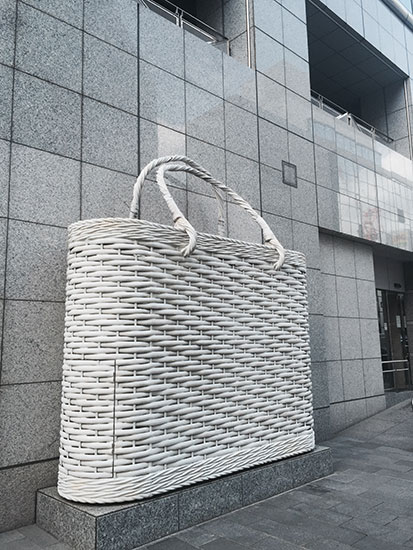 |
|
An installation at Tachikawa art zone on the outskirts of Tokyo.[Photo provided to China Daily] |
Meanwhile, in spite of his global perspective, Kitagawa says he wants public artwork to be deeply rooted in local communities.
"It can be successful only when it is admired by local people and reflects their happiness and sadness."
As for Kitagawa's other projects, there is the Echigo-Tsumari Art Triennale in a mountainous area of Japan's Niiagata prefecture. Launched in 2000, the first show featured 148 artists from 32 countries and regions, showcasing the relationship between humans and nature through more than 1,000 pieces.
He says that local farmers are part of that "art gallery", which covers 760 square kilometers.
Speaking about the event's impact and the farmers' roles in it, he says: "Perhaps, they did not understand the works at first, but when the event brings visitors ... tourism brings happiness to local people. And Echigo-Trumari has seen an extraordinary number of repeat visitors."
Over half of the visitors to the event have been there before.
Another major project is the Setouchi Triennale, which Kitagawa launched in 2010.
The event was meant to revitalize the local economy by creating modern art pieces related to the local environment.
Giving his views on public participation in the creation of these art zones, Kitagawa says that, in the case of Lujiazui, representatives of the property owners are to be invited to have their say in the choice of the art to be displayed as a first step to blending their daily lives with the upcoming art zone.
But Kitagawa is against the idea of polls when it comes to designing public art spaces.
However, the Lujiazui project will have an appraisal panel comprising museum curators, art commentators and government experts.
"Different tastes can live together, and we don't need uniformity. The quality of the artwork is the priority," he says.
"I'd like to use my previous experience to bring something unprecedented to Shanghai, but no one knows what is about to come."
Kitagawa says he is more interested in ushering public art into traditional neighborhoods in Chinese cities, rather than newly established districts.
"And, with China now advocating a 'beautiful countryside', I think I can help bring new life to those villages."
But he admits it will take time before public art is widely accepted.
"In most cases, artists create works following their intuition. And though the works may not have high-sounding themes, they do manage to touch people's hearts and give them positive energy," he says.
Comparing art to a baby, he says: "It is disobedient and not productive, but very interesting. And people will build connections with each other to protect it."
|
|
|
|
|
|
|
|
